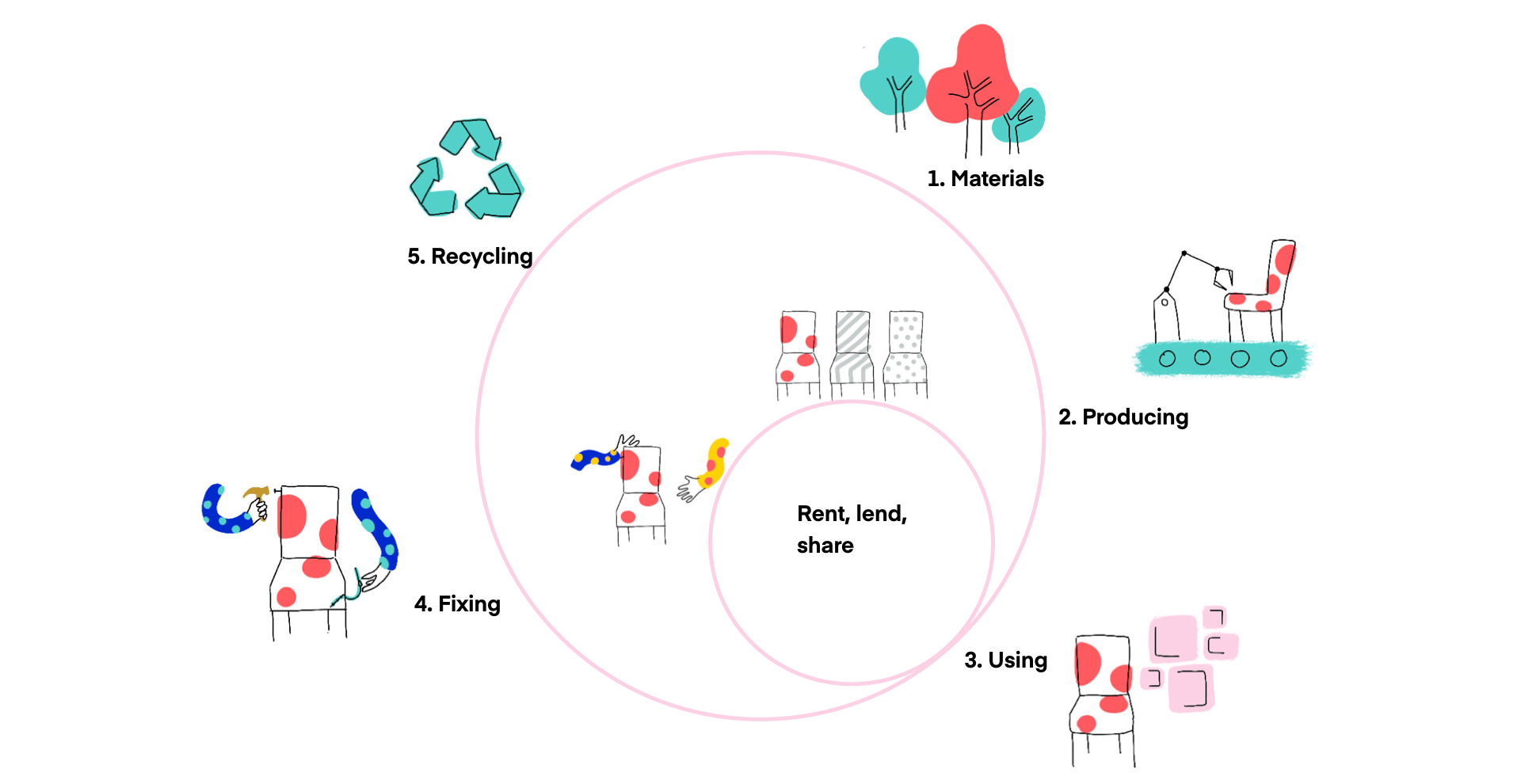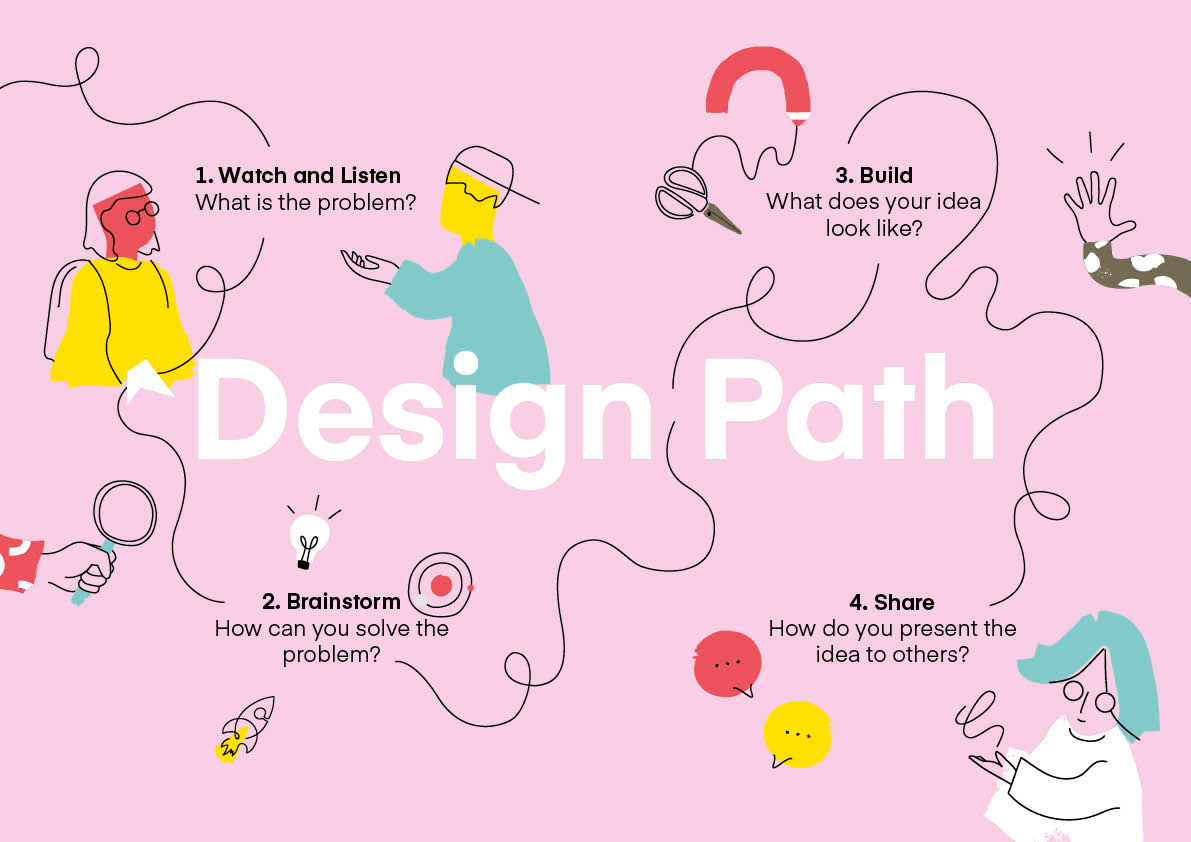
How to stay creative: Learning from kids

What would be the most important skills you would like your kids to have in the future? While machines are taking over many manual and high-level tasks, design skills are likely to be in high demand among us humans. For example, the Future of Jobs Report 2018 by World Economic Forum shows that innovation, creativity, and emotional intelligence are among the skills that will have a growing demand in 2022.
How to teach design thinking for kids?
So how can we teach kids to be curious, compassionate and creative? When people discuss this it’s often forgotten that children already have these skills – the problem is that it’s very easy to lose them while growing up. I understood this when organizing a design workshop for 30 kids in the Finnish Science Center Heureka on October 16th.
In the workshop, called Idean Kids Academy, children aged 9 to 12 were offered a chance to practice empathy and creativity with design professionals. Focusing on the topic of the Circular Economy, the kids were challenged to design a new home that uses resources like energy and water in an efficient way.
Concepts like Circular Economy and Design Thinking can be confusing even for adults, so we wanted to use easy words and tangible examples in this workshop. I admit that as a designer it’s easy to stick with my professional jargon so this was a good wake-up call to think about what kind of language I’m using when workshopping with adults, too.
Use familiar examples to tell a story
First, we talked a little about the concept of a Circular Economy. We wanted to use a familiar example, like a chair, to tell a story about the topic. Currently, people and companies use this linear approach, which reduces a lot of capital: You produce a chair, use it and when it breaks you ditch it and buy a new one. Because this approach can’t work long-term, we should rethink and redesign products and components, and move towards a Circular Economy model: We use good-quality materials and produce the chair in a sustainable way. When using the chair we should think do we really need to buy a new chair? Or could we, for instance, rent it or share it with others? When the chair breaks we’ll fix it and if it can’t be fixed anymore we can use the parts as material for something else, maybe even a table. And this way, the cycle starts again from the beginning.

Design Process = Design Path
When talking about Design Thinking, we workshop facilitators talked about a Design Path instead of a design process. The Design Path was based on a common design process consisting of four different steps, with the workshop organized around these. First, we introduced three easy to empathize with characters, each with common challenges related to using materials and resources in a sustainable way. One challenge was about re-using water, one about saving electricity and another about re-using plastic. Second, kids had to choose one challenge and brainstorm ideas on how to solve it. During the day kids were also able to turn their ideas into reality by building prototypes with their hands and practice communicating complex ideas by presenting their prototypes to others.

Creativity needs to be nurtured
My intention for the day was to teach kids but the day was also a learning experience for me – or as a designer, at least a good reminder for why design thinking approach and practices work so well when you have to redesign or come up with something new.
First of all, in a workshop, it’s crucial to make the participants feel safe. Creating an environment of trust is necessary so that people feel that it’s safe to brainstorm ideas.
Secondly, for some kids, it was natural to come up with ideas by drawing and writing. However, some of the kids actually found their creativity when they started to build a prototype. This is a good reminder of why thinking with your hands works so well.
The most interesting learning for me, however, was to see how easy brainstorming was for the younger kids. They just started throwing out ideas and didn’t worry about their ideas being stupid. On the other hand, the older kids were more self-conscious and it took much more time for them to warm up. I tried to emphasize the fact that at this step there were no bad ideas but it took some time and quite a lot of guidance before these kids started to ideate.
I think this tells about how easy it is to lose one’s confidence in expressing creativity. Young kids are creative by their nature but creativity is something that needs to be nurtured in kids – sadly the world we live in doesn’t really encourage us, adults, to use our imagination, come up with new ideas and especially not to share our wildest ideas with others.
Lessons learned:
- Ensure enough time for different practices to create an environment of trust – it’s easier to be creative when you feel safe
- Some people like to brainstorm ideas on paper, some with their hands
- It’s easy to lose confidence in expressing one’s creativity while growing up – design thinking helps to nurture creativity!
Practicing design activities can help kids to nurture creativity. In design workshops, kids can also learn skills such as critical thinking, collaboration, self-expression, and compassion. These skills are vital to success at school and beyond but also critical in order to re-think and re-design products and components and move towards a Circular Economy. If we think these skills are important for future adults, we definitely should teach design thinking for kids.
Written by Minna Rissanen. Illustrations by Chan Luu and Elisa Mykkänen. Video by Petri Heiskanen
 Play video
Play video
We respect your privacy
We use Cookies to improve your experience on our website. They help us to improve site performance, present you relevant advertising and enable you to share content in social media. You may accept all Cookies, or choose to manage them individually. You can change your settings at any time by clicking Cookie Settings available in the footer of every page. For more information related to the Cookies, please visit our Cookie Policy.
